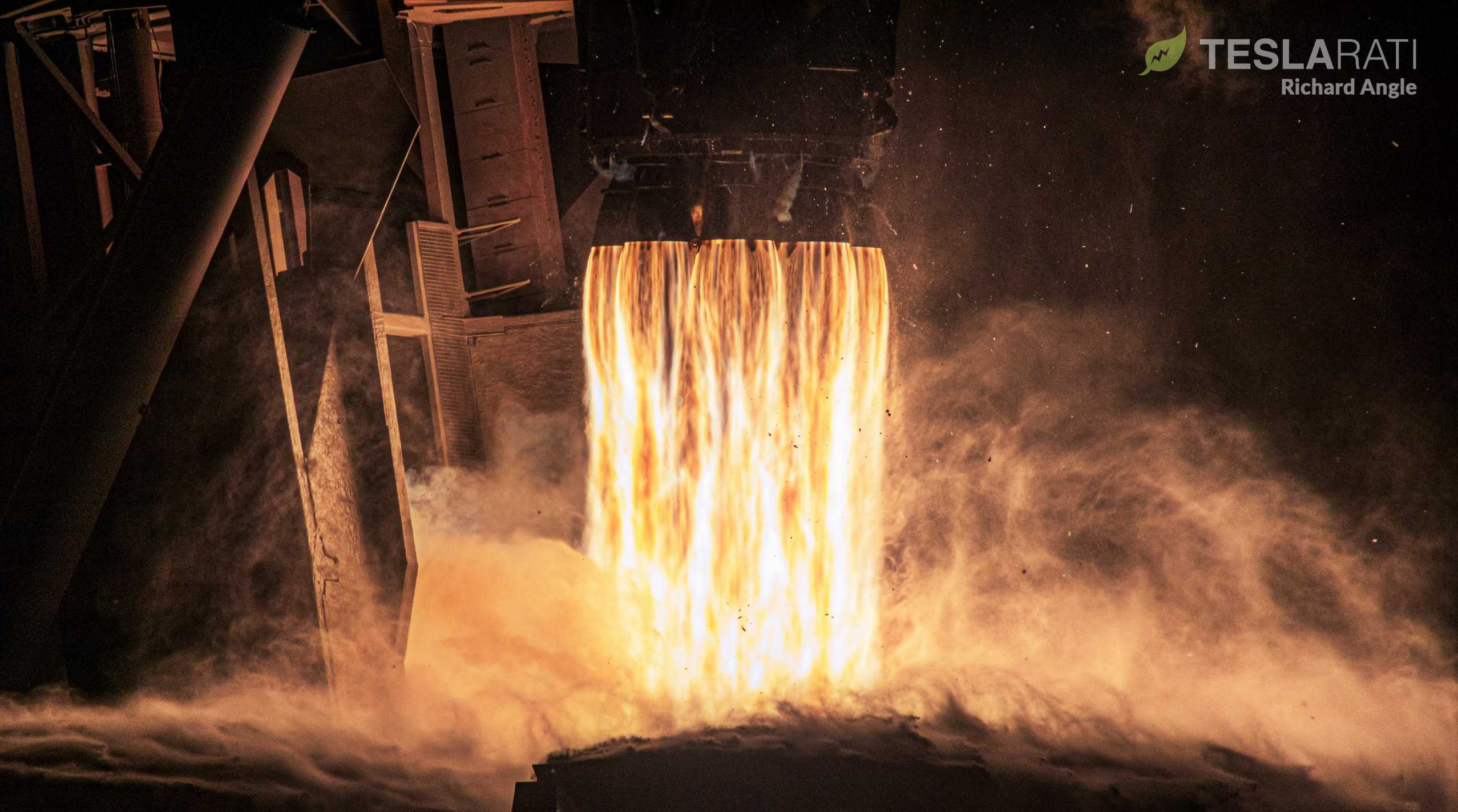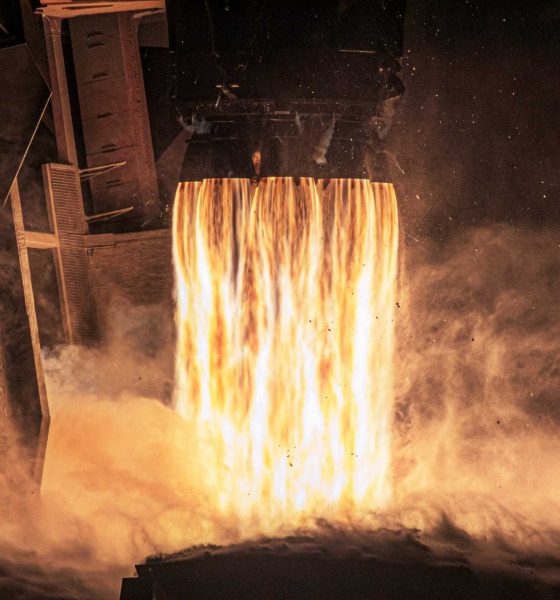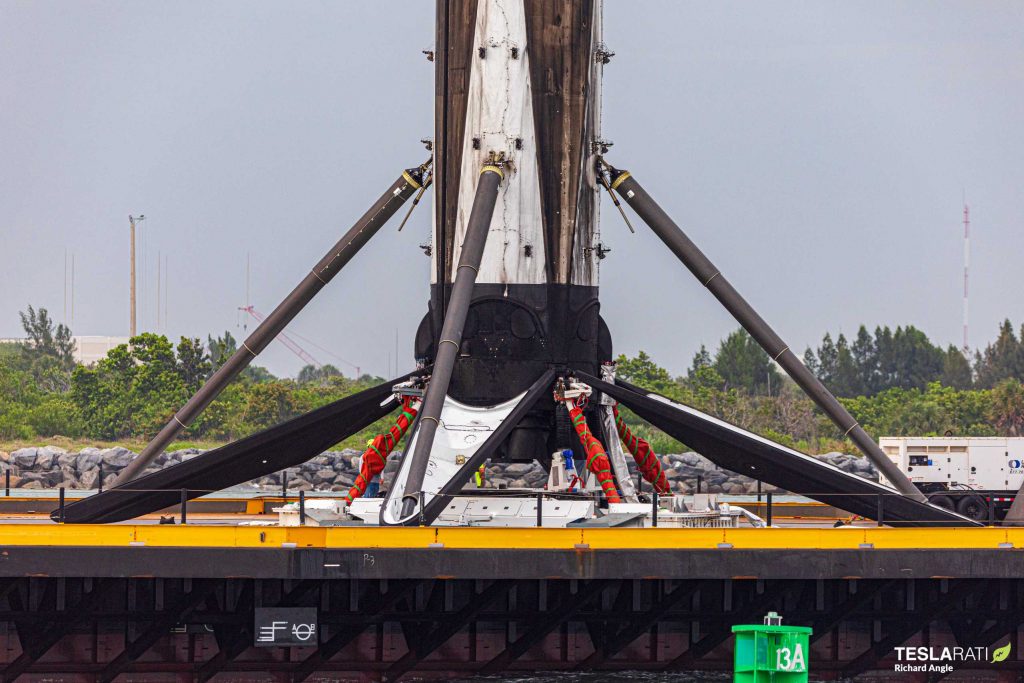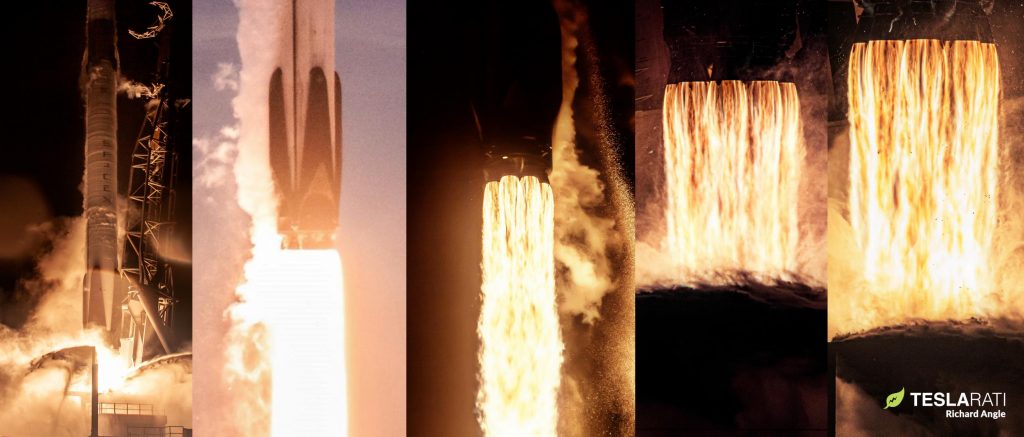

News
SpaceX on track for first four-launch month ever
With the first mission under its belt, SpaceX is on track to complete four orbital-class launches in a single month for the first time ever, an encouraging sign as it seeks to rapidly deploy its Starlink constellation.
A June 3rd launch of 60 Starlink v1.0 satellites – the seventh such mission – kicked off SpaceX’s potentially record-breaking month while also marking the first time a Falcon 9 booster has successfully launched and landed five times. Itself coming just a week after SpaceX successfully launched NASA astronauts to the International Space Station for the first time ever, the company has done the exact opposite of resting on its laurels after that historic achievement.
Aside from Starlink V1 L7, SpaceX has another two Starlink missions scheduled to launch no earlier than (NET) June 12th and 24th, as well as a critical US military GPS satellite launch NET June 30th. While the margins are exceptionally thin, there’s still a decent chance that June 2020 could wind up being SpaceX’s first four-launch month.

Of course, there are many, many reasons that that might not happen. SpaceX has completed more than two-thirds of its 88 successful launches in the last three and a half years, a little more than a third of the time Falcon 9 has been operational. In those 3.5 years, the company has managed to achieve three launches in a single month on four separate occasions – most recently in January 2020, while the closest SpaceX has come was four launches in 32 days in 2017. As such, a four-launch month wouldn’t exactly be game-changing relative to SpaceX’s past achievements, but it would leave the company on pace for 2020 to be its most productive year yet.
As of now, SpaceX has completed nine launches in a little over five months, pacing towards a tie with 2018, when it completed a record 21 missions. If SpaceX manages four – or even three – launches this month, its moving average for the year will jump to 22 or 24.

Regardless, a four-launch month is only possible this June because of SpaceX’s recent success upgrading a second drone ship – Just Read The Instructions (JRTI) for East Coast recovery operations. With Starlink V1 L9 and GPS III SV03 scheduled on June 24th and 30th, there would be no way for drone ship Of Course I Still Love You (OCISLY) to head out to sea, return after Starlink V1 L9, and return to its landing zone in the Atlantic in time for another booster recovery.

By completing its June 3rd East Coast debut and June 7th return to port, drone ship JRTI can now be considered operational and should offer a new level of flexibility to SpaceX, potentially enabling more than four drone ship landings in a single month. Add in SpaceX’s twin Cape Canaveral Landing Zones (LZ-1/2) and the company should soon have the ability to perform dozens of Falcon 9 launches annually in a repeatable, reliable fashion. At least for the next year or two, SpaceX should have no shortage of payloads – both commercial and internal – to launch as it gradually improves its launch cadence.
SpaceX has 14 commercial launches scheduled in the second half of 2020, while an additional 20-24 Starlink launches were planned around the start of the year. If the company can pull off three Starlink launches this month, it will be on track to complete ~18 this year – more than enough to begin a limited service roll-out to customers around the world. For now, Starlink V1 L8 is scheduled to launch no earlier than (NET) ~5:30 am EDT (09:30 UTC) on Friday, June 12th. Falcon 9 booster B1059, an expendable upper stage, and 60 new Starlink satellites could roll out for their prelaunch static fire anytime within the next few days.
Check out Teslarati’s Marketplace! We offer Tesla accessories, including for the Tesla Cybertruck and Tesla Model 3.

News
Tesla FSD fleet is nearing 7 billion total miles, including 2.5 billion city miles
As can be seen on Tesla’s official FSD webpage, vehicles equipped with the system have now navigated over 6.99 billion miles.

Tesla’s Full Self-Driving (Supervised) fleet is closing in on almost 7 billion total miles driven, as per data posted by the company on its official FSD webpage.
These figures hint at the massive scale of data fueling Tesla’s rapid FSD improvements, which have been quite notable as of late.
FSD mileage milestones
As can be seen on Tesla’s official FSD webpage, vehicles equipped with the system have now navigated over 6.99 billion miles. Tesla owner and avid FSD tester Whole Mars Catalog also shared a screenshot indicating that from the nearly 7 billion miles traveled by the FSD fleet, more than 2.5 billion miles were driven inside cities.
City miles are particularly valuable for complex urban scenarios like unprotected turns, pedestrian interactions, and traffic lights. This is also the difference-maker for FSD, as only complex solutions, such as Waymo’s self-driving taxis, operate similarly on inner-city streets. And even then, incidents such as the San Francisco blackouts have proven challenging for sensor-rich vehicles like Waymos.
Tesla’s data edge
Tesla has a number of advantages in the autonomous vehicle sector, one of which is the size of its fleet and the number of vehicles training FSD on real-world roads. Tesla’s nearly 7 billion FSD miles then allow the company to roll out updates that make its vehicles behave like they are being driven by experienced drivers, even if they are operating on their own.
So notable are Tesla’s improvements to FSD that NVIDIA Director of Robotics Jim Fan, after experiencing FSD v14, noted that the system is the first AI that passes what he described as a “Physical Turing Test.”
“Despite knowing exactly how robot learning works, I still find it magical watching the steering wheel turn by itself. First it feels surreal, next it becomes routine. Then, like the smartphone, taking it away actively hurts. This is how humanity gets rewired and glued to god-like technologies,” Fan wrote in a post on X.
News
Tesla starts showing how FSD will change lives in Europe
Local officials tested the system on narrow country roads and were impressed by FSD’s smooth, human-like driving, with some calling the service a game-changer for everyday life in areas that are far from urban centers.

Tesla has launched Europe’s first public shuttle service using Full Self-Driving (Supervised) in the rural Eifelkreis Bitburg-Prüm region of Germany, demonstrating how the technology can restore independence and mobility for people who struggle with limited transport options.
Local officials tested the system on narrow country roads and were impressed by FSD’s smooth, human-like driving, with some calling the service a game-changer for everyday life in areas that are far from urban centers.
Officials see real impact on rural residents
Arzfeld Mayor Johannes Kuhl and District Administrator Andreas Kruppert personally tested the Tesla shuttle service. This allowed them to see just how well FSD navigated winding lanes and rural roads confidently. Kruppert said, “Autonomous driving sounds like science fiction to many, but we simply see here that it works totally well in rural regions too.” Kuhl, for his part, also noted that FSD “feels like a very experienced driver.”
The pilot complements the area’s “Citizen Bus” program, which provides on-demand rides for elderly residents who can no longer drive themselves. Tesla Europe shared a video of a demonstration of the service, highlighting how FSD gives people their freedom back, even in places where public transport is not as prevalent.
What the Ministry for Economic Affairs and Transport says
Rhineland-Palatinate’s Minister Daniela Schmitt supported the project, praising the collaboration that made this “first of its kind in Europe” possible. As per the ministry, the rural rollout for the service shows FSD’s potential beyond major cities, and it delivers tangible benefits like grocery runs, doctor visits, and social connections for isolated residents.
“Reliable and flexible mobility is especially vital in rural areas. With the launch of a shuttle service using self-driving vehicles (FSD supervised) by Tesla in the Eifelkreis Bitburg-Prüm, an innovative pilot project is now getting underway that complements local community bus services. It is the first project of its kind in Europe.
“The result is a real gain for rural mobility: greater accessibility, more flexibility and tangible benefits for everyday life. A strong signal for innovation, cooperation and future-oriented mobility beyond urban centers,” the ministry wrote in a LinkedIn post.
News
Tesla China quietly posts Robotaxi-related job listing
Tesla China is currently seeking a Low Voltage Electrical Engineer to work on circuit board design for the company’s autonomous vehicles.

Tesla has posted a new job listing in Shanghai explicitly tied to its Robotaxi program, fueling speculation that the company is preparing to launch its dedicated autonomous ride-hailing service in China.
As noted in the listing, Tesla China is currently seeking a Low Voltage Electrical Engineer to work on circuit board design for the company’s autonomous vehicles.
Robotaxi-specific role
The listing, which was shared on social media platform X by industry watcher @tslaming, suggested that Tesla China is looking to fill the role urgently. The job listing itself specifically mentions that the person hired for the role will be working on the Low Voltage Hardware team, which would design the circuit boards that would serve as the nervous system of the Robotaxi.
Key tasks for the role, as indicated in the job listing, include collaboration with PCB layout, firmware, mechanical, program management, and validation teams, among other responsibilities. The role is based in Shanghai.
China Robotaxi launch
China represents a massive potential market for robotaxis, with its dense urban centers and supportive policies in select cities. Tesla has limited permission to roll out FSD in the country, though despite this, its vehicles have been hailed as among the best in the market when it comes to autonomous features. So far, at least, it appears that China supports Tesla’s FSD and Robotaxi rollout.
This was hinted at in November, when Tesla brought the Cybercab to the 8th China International Import Expo (CIIE) in Shanghai, marking the first time that the autonomous two-seater was brought to the Asia-Pacific region. The vehicle, despite not having a release date in China, received a significant amount of interest among the event’s attendees.








